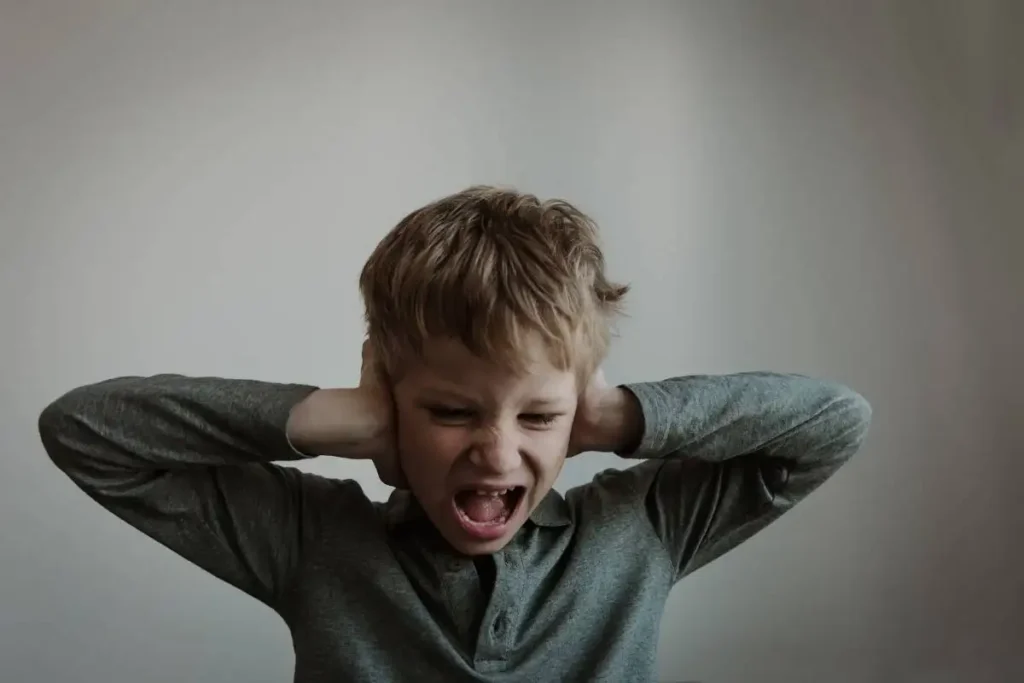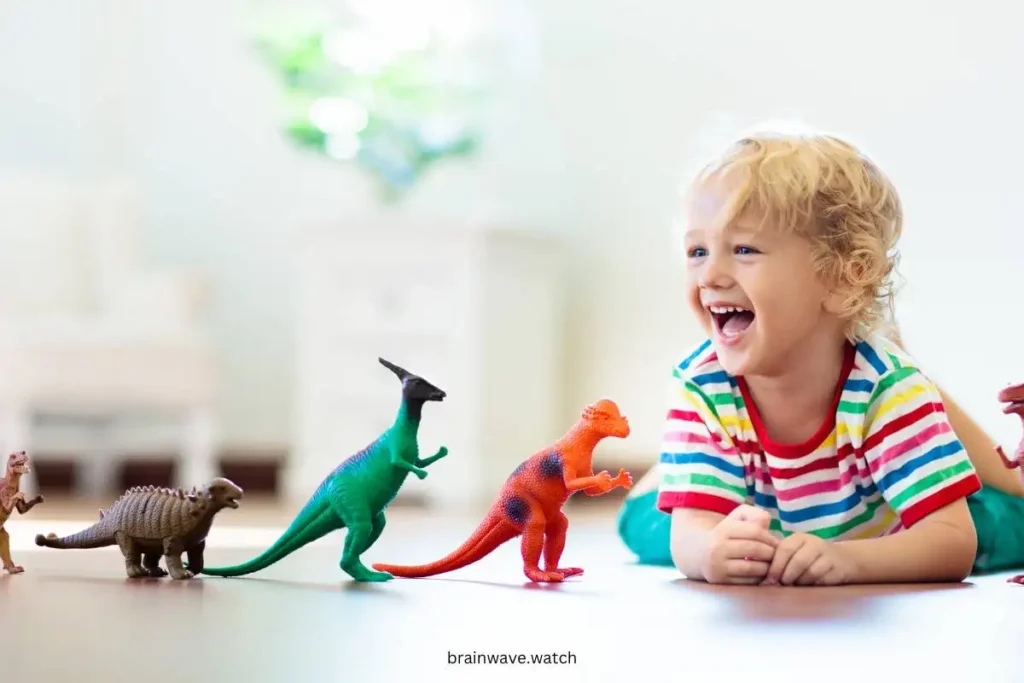A sensory meltdown is a behavioral response to sensory overload. It is often seen in individuals who have sensory processing difficulties, such as those with autism spectrum disorder, attention deficit hyperactivity disorder, and sensory processing disorder. Sensory overload can occur when there is excessive sensory input, such as bright lights, loud noises, strong smells, or uncomfortable textures.
During a sensory meltdown, an individual may experience various symptoms, such as crying, screaming, hitting, kicking, or running away. They may also exhibit self-injurious behavior, such as biting or scratching themselves. These behaviors can be frightening for both the individual and those around them.
It is important to note that a sensory meltdown is not the same as a tantrum. A tantrum is a deliberate attempt to get attention or to obtain something, while a sensory meltdown is an involuntary response to overwhelming sensory input. A sensory meltdown can last longer than a tantrum and may not respond to typical disciplinary measures.
It is also important to understand that sensory meltdowns are not a choice. They result from the individual’s neurological differences and inability to process sensory information in the same way as others. It is crucial to approach sensory meltdowns with empathy and understanding, rather than judgment or punishment.
Identifying Triggers
Identifying triggers is an essential step in managing sensory meltdowns. By knowing what triggers a sensory meltdown, parents, caregivers, and educators can take steps to prevent or reduce the likelihood of a meltdown. Here are some common triggers to look out for:
Environmental Factors
Bright lights, loud noises, strong smells, and crowded spaces are common environmental triggers of sensory meltdowns. For example, a child with sensory processing disorder may have a meltdown in a noisy and crowded shopping mall or a brightly lit classroom. Parents and caregivers can reduce the impact of these triggers by creating a sensory-friendly environment. This can include using earplugs or headphones to reduce noise, using dimmer lights, and avoiding strong smells.
Social Interactions
Social interactions can also be a trigger for sensory meltdowns. For example, a child with sensory processing disorder may have a meltdown when meeting new people or in social situations where many people are talking at once. Parents and caregivers can help by preparing the child for social situations, explaining what will happen, and providing a quiet space for the child to retreat if needed.
Routine Disruptions
Disruptions to routines can also be a trigger for sensory meltdowns. For example, a child with sensory processing disorder may have a meltdown when there is a change in their routine, such as a change in their mealtime or bedtime. Parents and caregivers can help by providing a predictable routine and warning the child of any changes.
Identifying triggers is just the first step in managing sensory meltdowns. It is important to work with a healthcare professional to develop a comprehensive plan for managing sensory meltdowns. By working together, parents, caregivers, and healthcare professionals can help children with sensory processing disorders lead happy and fulfilling lives.
Strategies for Management
People with sensory processing difficulties may experience sensory meltdowns, which can be distressing for both the individual and those around them. Here are some strategies that can help manage sensory meltdowns:
Preventive Measures
Prevention is key when it comes to sensory meltdowns. People with sensory processing difficulties may benefit from a sensory diet, which involves incorporating specific sensory activities throughout the day to help regulate their sensory system. This can include activities such as deep pressure, movement, or sensory play. A sensory diet should be individualized to the person’s specific sensory needs and preferences.
In addition, avoiding sensory triggers can help prevent sensory meltdowns. For example, if someone is sensitive to loud noises, they may benefit from wearing noise-cancelling headphones or earplugs in noisy environments.
Coping Techniques
Despite preventive measures, sensory meltdowns may still occur. In these situations, it is important to have coping techniques in place. Deep breathing, mindfulness, and progressive muscle relaxation are all techniques that can help regulate the body’s response to stress.
Another coping technique is to remove the individual from the overwhelming environment and provide a calming sensory experience. This can include a quiet room with dim lighting, a weighted blanket, or a sensory toy.
Professional Support
For some individuals, sensory meltdowns may be a frequent and significant challenge. In these cases, seeking professional support may be beneficial. Occupational therapists can provide sensory integration therapy, which involves working with the individual to develop their sensory processing abilities and coping strategies.
In addition, mental health professionals can provide support for the emotional and psychological impact of sensory meltdowns. This may include cognitive-behavioral therapy or other therapeutic interventions.
Impact on Daily Life
Children who experience sensory meltdowns may face significant challenges in their daily lives. These challenges can impact their educational, social, and family dynamics.
Educational Challenges
Sensory meltdowns can make it difficult for children to focus and learn in a classroom setting. They may become overwhelmed by sensory stimuli such as bright lights, loud noises, or strong smells. This can lead to difficulty paying attention, retaining information, and completing tasks.
To help children with sensory processing difficulties succeed in school, teachers and parents can work together to create a sensory-friendly environment. This may involve providing a quiet space for the child to retreat to when feeling overwhelmed, minimizing sensory distractions, and using sensory tools such as weighted blankets or fidget toys.
Social Implications
Children with sensory processing difficulties may struggle with social interactions. They may avoid certain activities or environments due to sensory triggers, which can limit their opportunities for socialization. Additionally, they may have difficulty reading social cues or expressing themselves in a way that others can understand.
To help children with sensory processing difficulties succeed socially, parents and caregivers can work with them to develop coping strategies and social skills. This may involve role-playing social situations, practicing communication techniques, and seeking out supportive social environments.
Family Dynamics
Sensory meltdowns can also impact family dynamics. Parents and caregivers may struggle to understand and respond to their child’s sensory needs, which can lead to frustration and tension. Additionally, siblings may feel neglected or resentful if their sibling with sensory processing difficulties requires more attention or resources.
To promote a positive family dynamic, parents and caregivers need to educate themselves about sensory processing difficulties and work together to create a supportive environment for their children. This may involve seeking out professional support, such as occupational therapy, and setting aside dedicated time for each family member to receive attention and support.
Resources and Support
Finding resources and support for sensory meltdowns is an essential part of managing them. Here are some resources that can help:
1. Occupational Therapy
Occupational therapy can help children develop skills to cope with sensory overload and prevent meltdowns. An occupational therapist can work with the child to identify triggers and develop strategies to manage them. They may also recommend sensory tools and activities to help the child regulate their sensory system.
2. Online Communities
Online communities can provide a wealth of information and support for parents and caregivers of children with sensory processing issues. Websites like Understood.org and Reframing Autism offer articles, forums, and resources for families.
3. Sensory Diet Tools
Sensory diet tools can help manage sensory overload and prevent meltdowns. These tools include weighted blankets, fidget toys, and noise-cancelling headphones. Parents and caregivers can work with an occupational therapist to determine which tools are most appropriate for their child’s needs.
4. Calming Techniques
Calming techniques can be effective in preventing and managing sensory meltdowns. Deep breathing exercises, yoga, and mindfulness practices can help children regulate their emotions and reduce stress. Parents and caregivers can work with an occupational therapist to develop a personalized plan for their child.
5. Parent Training
Parent training can provide parents and caregivers with the tools and strategies they need to support their child with sensory processing issues. Training may include education on sensory processing, behavior management techniques, and communication strategies.
Remember, managing sensory meltdowns is a process that requires patience, understanding, and support. With the right resources and tools, children with sensory processing issues can learn to regulate their sensory system and thrive.







